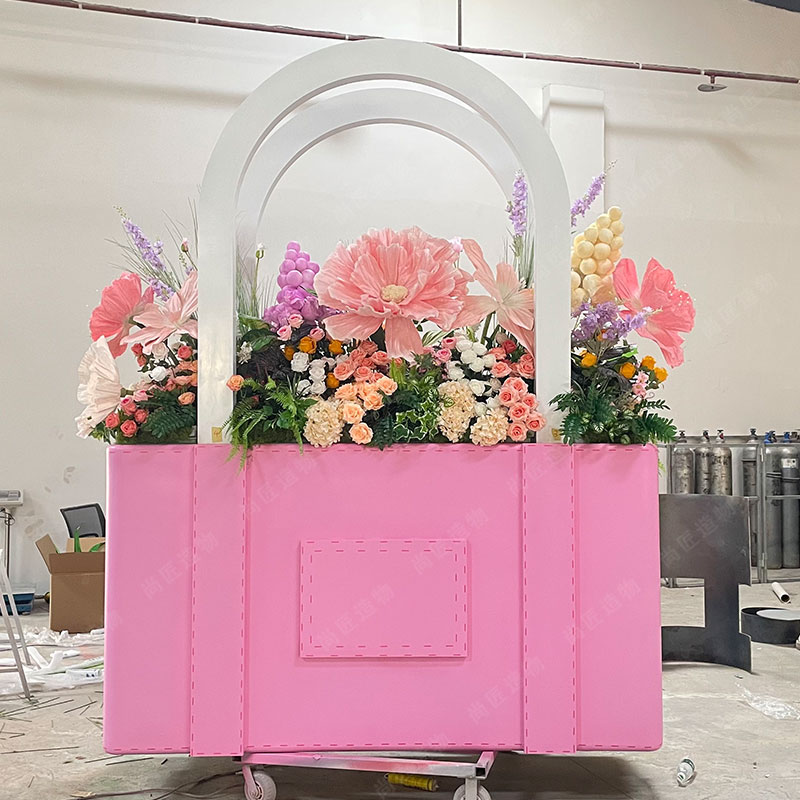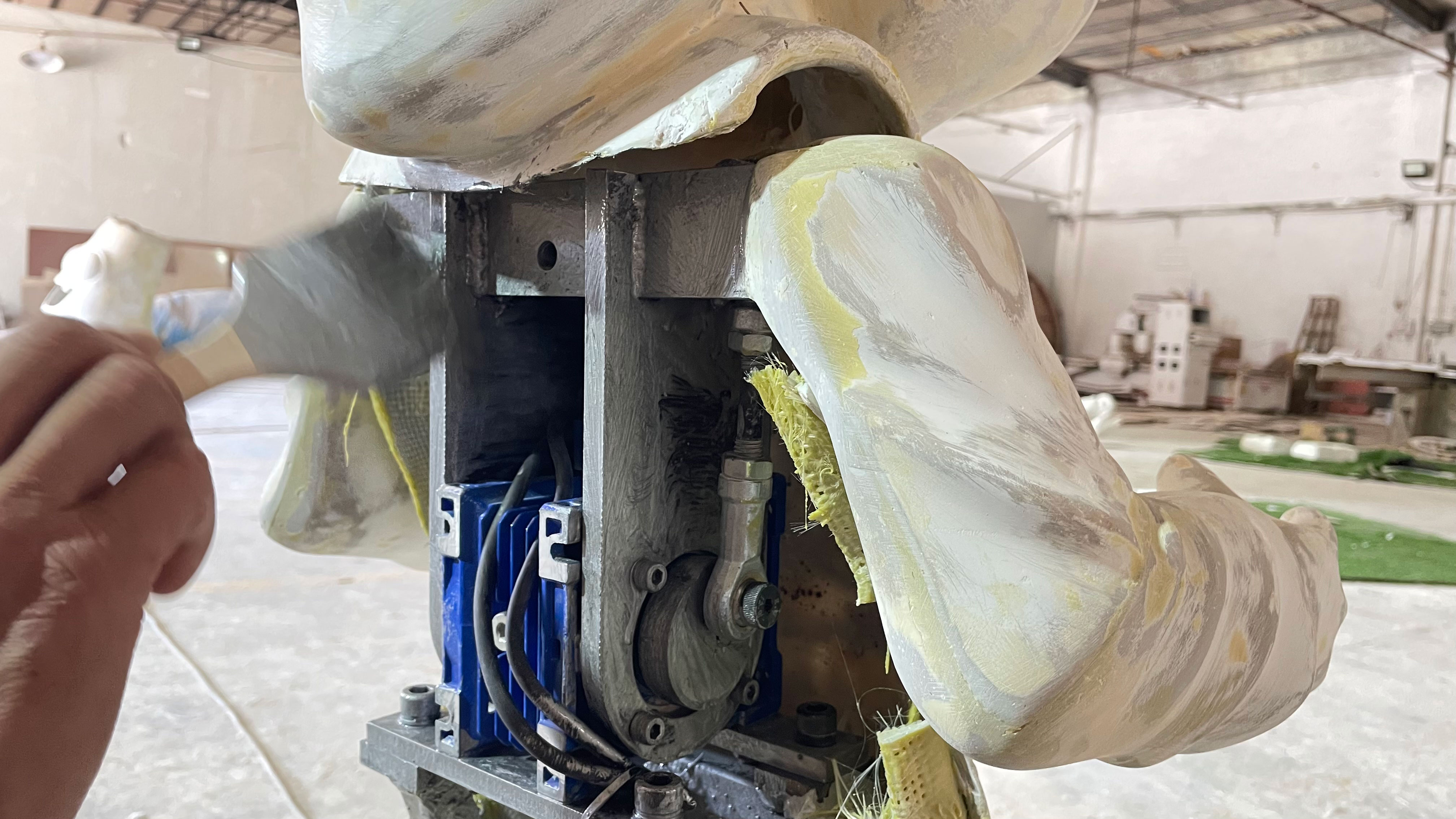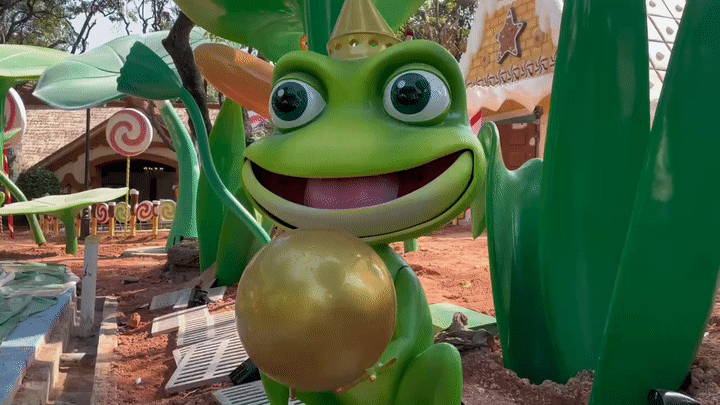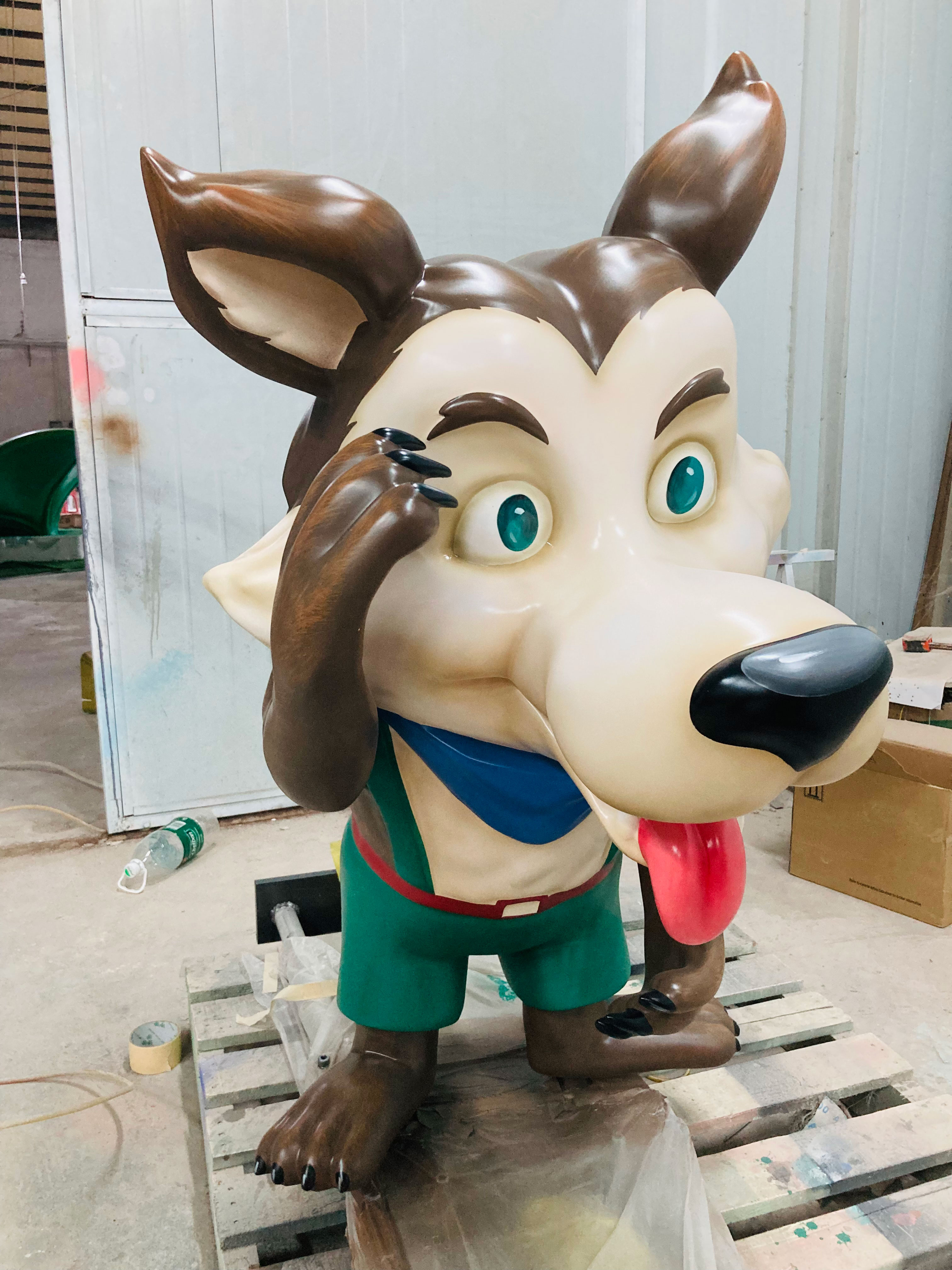Key Takeaways
Understanding the legal boundaries of creating IP-inspired sculptures requires balancing artistic expression with intellectual property rights. Three primary factors determine legality: adherence to copyright law, application of fair use principles, and compliance with licensing agreements. Transformative elements—such as reimagining a character’s design or context—can strengthen a fair use defense, while direct replication often risks infringement.
Commercial intent significantly impacts risk levels; selling unlicensed sculptures at scale increases exposure to legal action. For example, a fiberglass sculpture inspired by popular media may face scrutiny if marketed without permissions. Rights holders, like Marvel or Studio Ghibli, typically enforce trademarks more aggressively for high-revenue characters.
| Factor | Low-Risk Scenario | High-Risk Scenario |
|---|---|---|
| Transformative Use | Unique stylistic interpretation | Direct copy of original design |
| Commercial Scale | Limited, non-profit exhibitions | Mass production for retail |
| Permissions | Licensed agreements in place | No contact with rights holders |
Artists should document their creative process and seek legal advice when scaling projects. Proactive steps, such as negotiating licenses or focusing on public domain characters, reduce litigation risks while preserving artistic freedom.

Copyright Law Essentials for Fan-Made Sculptures
Creating sculptures inspired by copyrighted characters requires understanding foundational copyright principles. Under U.S. law, original artistic works—including character designs—are automatically protected upon creation. This means reproducing recognizable features (https://en.artmovr.com/) in abstract forms—may qualify for fair use protection.
Key considerations include whether the work adds new expression or meaning and whether it competes with the original’s market. For instance, selling unlicensed miniature Ghibli figurines could undermine official merchandise sales, increasing liability. Courts also evaluate the "substantial similarity" between the fan art and the copyrighted material, focusing on distinctive traits like color schemes, poses, or accessories. Proactive steps, such as altering proportions or merging elements from multiple IPs, can reduce infringement risks. When in doubt, securing a licensing agreement or creating wholly original designs remains the safest path.

Fair Use in Character-Based Artwork Creation
The application of fair use in character-based sculptures hinges on balancing artistic expression with copyright protections. Courts typically evaluate four factors: the purpose of the work (https://en.artmovr.com/) inspired by Marvel’s Iron Man might qualify as fair use if it reimagines the character in a distinct artistic style, critiques its cultural significance, or uses minimal recognizable elements. Transformative works—those adding new meaning or context—are more likely to receive protection. However, even noncommercial projects risk infringement if they replicate key design features or undermine licensing opportunities for rights holders. Studio Ghibli’s strict enforcement against derivative Miyazaki-themed sculptures illustrates how courts often prioritize trademark integrity over fan interpretations. Artists should document creative decisions, limit direct copying, and assess whether their work could plausibly substitute for official merchandise. While fair use offers flexibility, its boundaries remain ambiguous, requiring careful analysis of both legal standards and the specific IP’s enforcement history.
Licensing Agreements for IP Sculpture Artists
Navigating licensing agreements is critical for artists creating IP character sculptures inspired by copyrighted works. These contracts, often negotiated with rights holders like studios or publishers, define the scope of permitted use—including production quantities, distribution channels, and profit-sharing terms. For instance, a sculptor might secure a royalty-based license requiring payment per unit sold or a flat fee for limited-edition works.
“Licensing terms can vary dramatically—some agreements allow artistic reinterpretation, while others demand strict adherence to brand guidelines,” notes intellectual property attorney Elena Torres.
Key considerations include territorial restrictions (e.g., selling only within specific regions) and duration clauses that limit how long the license remains valid. Artists should also verify whether derivative works require pre-approval, as unauthorized modifications could breach contractual terms. For small-scale creators, collective licensing organizations sometimes offer streamlined options for fan art projects.
Tip: Always review termination conditions to avoid sudden loss of rights to sell existing inventory. Consulting an IP attorney during negotiations helps identify hidden liabilities, such as indemnification clauses shifting legal risks to the artist. While licensing adds upfront complexity, it provides legal certainty for commercializing works tied to established franchises.
Transformative Art vs. Copyright Infringement
The line between transformative art and copyright infringement often hinges on how significantly an artwork reinterprets its source material. Under U.S. law, "transformative use" requires adding new expression, meaning, or purpose—such as parody, critique, or radical recontextualization. For example, a sculpture inspired by Marvel’s Iron Man might avoid infringement if it reimagines the character as a stainless steel sculpture symbolizing industrial decay, rather than replicating the original design. Courts typically assess whether the work serves a different function than the source material and whether it competes economically with the original.
However, even highly creative adaptations risk legal challenges if they retain recognizable elements without permission. Studio Ghibli’s strict enforcement against derivative works demonstrates this tension: a Miyazaki-inspired piece using Totoro’s likeness in a commercial gallery could face claims unless it substantially alters the character’s aesthetic or narrative role. Key factors include the proportion of copied elements, the artist’s intent, and whether the work impacts the market for the original. Legal outcomes often depend on nuanced interpretations, making preemptive consultations with IP attorneys critical for artists navigating this gray area.

Commercial Scale Impact on IP Legal Risks
The commercial scope of character sculpture production significantly influences legal exposure under intellectual property laws. Small-scale hobbyist creations, such as handmade Cartoon sculpture sold locally, often fall under limited liability thresholds due to minimal market disruption. However, mass production or high-volume online sales amplify risks, as courts increasingly correlate revenue generation with willful infringement under statutes like the U.S. Digital Millennium Copyright Act. For instance, a sculptor selling 10 units annually faces different scrutiny than a business distributing 10,000 units globally, particularly when replicating protected elements like Marvel’s Iron Man armor or Studio Ghibli’s Totoro silhouette.
Legal precedents suggest commercial intent—measured through marketing reach, profit margins, and audience targeting—directly impacts statutory damages. Rights holders typically prioritize litigation against operations affecting their licensing revenue, with Disney’s 2022 lawsuit against unlicensed Marvel figurine manufacturers demonstrating this enforcement gradient. Transitioning from artisanal to industrial production usually necessitates formal licensing agreements, as seen in Studio Ghibli’s partnership model for approved merchandise. Emerging artists should note that platforms like Etsy or Amazon Handmade now employ automated IP detection systems, making scalable commercialization without permissions increasingly untenable.
Rights Holder Permissions in Fan Art
Securing explicit permissions from intellectual property (IP) rights holders remains a critical step for artists creating character-based sculptures, particularly when commercial intentions are involved. While fan art often operates in legal gray areas, formal authorization from entities like Marvel Studios or Studio Ghibli eliminates ambiguity by establishing clear boundaries for derivative works. For instance, licensing agreements may specify permitted uses, production limits, or royalty structures, ensuring compliance with the rights holder’s brand and revenue objectives. Notably, studios vary in their openness to fan creations: Marvel tends to enforce strict protections for its superhero characters, while Miyazaki’s studio has historically tolerated non-commercial tributes, provided they avoid mass-market distribution.
Obtaining permissions, however, can be challenging for independent artists. Rights holders often prioritize large-scale partnerships over individual requests, and licensing fees may exceed a sculptor’s budget. Even when permissions are granted, terms might restrict creative freedom—such as prohibiting alterations to character designs. Conversely, unlicensed works risk legal action unless they meet fair use criteria through transformative elements or minimal market competition. This interplay between legal safety and artistic autonomy underscores why many creators weigh permissions against project scope, balancing ethical respect for IP ownership with practical realities of fan-driven art.

Marvel and Miyazaki Sculpture Case Studies
Recent legal disputes involving Marvel and Studio Ghibli-inspired sculptures illustrate how courts assess copyright boundaries. In 2019, a U.S.-based artist faced a cease-and-desist order for selling 3D-printed Iron Man busts, despite adding custom weathering effects. Marvel’s parent company argued the sculptures replicated Tony Stark’s likeness without authorization, emphasizing commercial sales as a key infringement factor. Conversely, a 2021 Japanese case involving a Miyazaki-inspired No-Face wood sculpture avoided litigation. The artist modified the character’s proportions and context, placing it in a traditional tea ceremony setting. Courts deemed the work sufficiently transformative under fair use, aligning with Studio Ghibli’s historically lenient stance on non-commercial fan art.
These cases highlight divergent outcomes based on regional legal interpretations and corporate policies. While Marvel aggressively enforces trademarked character details, Miyazaki’s studio often tolerates artistic reinterpretations lacking direct competition. However, both scenarios underscore the importance of scale: limited-edition Miyazaki pieces faced no challenges, whereas mass-produced Marvel replicas triggered swift action. Legal experts note that even subtle creative alterations—combined with restrained distribution—can mitigate risks when navigating IP-heavy franchises.

Avoiding Lawsuits in Character Sculpture Sales
Artists selling character-inspired sculptures must balance creative expression with legal compliance. A primary safeguard involves consulting intellectual property attorneys to evaluate risks before production begins. For commercial ventures, securing licenses from rights holders—such as Marvel for superhero designs or Studio Ghibli for Miyazaki-inspired works—removes ambiguity, though fees and royalty structures may apply. Small-scale creators often rely on transformative alterations, such as reimagining a character in a distinct art style or cultural context, to strengthen fair use claims. However, even minor similarities to protected designs can trigger disputes if profits exceed hobbyist thresholds. Platforms like Etsy or art fairs increasingly require proof of licensing for recognizable IPs, making documentation essential. Proactive steps include limiting edition sizes, avoiding trademarked logos, and adding disclaimers clarifying unofficial status. Case studies show that disputes often arise from scale rather than intent—selling five handmade pieces may go unnoticed, while mass-producing 500 units almost guarantees scrutiny. When in doubt, direct collaboration with IP holders through official channels remains the safest path.
Conclusion
The legal landscape surrounding IP character sculptures remains complex, requiring artists to balance creative ambition with legal compliance. As discussed, key factors like transformative interpretation, commercial intent, and proper licensing form the foundation of lawful fan art. While fair use provisions offer limited protection for non-commercial, transformative works, large-scale sales or exact replicas often trigger copyright claims—as seen in disputes involving Marvel’s superhero designs or Studio Ghibli’s iconic characters. Rights holders increasingly monitor derivative artworks, making permissions and licenses critical for artists seeking long-term viability. Moving forward, sculptors should prioritize due diligence: consulting legal experts, negotiating licenses where feasible, and clearly documenting the creative process to demonstrate originality. By respecting intellectual property frameworks while advocating for artistic innovation, creators can navigate this evolving space responsibly.
FAQs
What makes a character sculpture legally transformative?
A sculpture becomes transformative by adding original elements that reinterpret the source material. Courts often consider whether the work offers commentary, parody, or a new aesthetic perspective distinct from the original IP.
Can I sell fan-made Marvel sculptures at small art fairs?
Limited commercial activity may lower legal risks, but profitability alone doesn’t guarantee protection. Rights holders like Marvel can still enforce copyright if the work lacks transformative qualities or proper licensing.
How do Miyazaki-inspired sculptures avoid copyright issues?
Artists often blend Studio Ghibli elements with original designs or cultural motifs to create distance from the source material. Securing permissions for direct adaptations remains the safest approach.
Does crediting the original IP owner prevent lawsuits?
Attribution acknowledges the source but doesn’t override copyright law. Legal protection depends on transformative intent, licensing agreements, or adherence to fair use principles.
Are 3D-printed character sculptures treated differently under copyright law?
The medium itself isn’t legally decisive. Reproduction methods matter only if they replicate protected designs without authorization, regardless of being handmade or digitally fabricated.
What role do licensing agreements play for sculpture artists?
Licenses provide legal rights to use specific IP elements within agreed parameters. Unlicensed works risk infringement claims unless they clearly qualify as fair use or parody.
 ch
ch English
English






